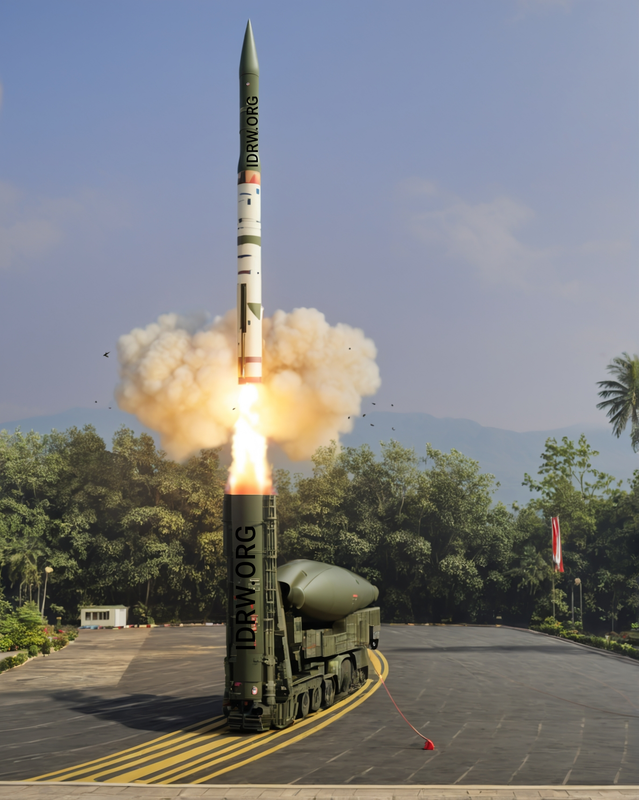SOURCE: RAUNAK KUNDE / NEWS BEAT / IDRW.ORG


Following the successful development and testing of the Agni-5 MkII, the Defence Research and Development Organisation (DRDO) has turned its attention to the Agni-IV MkII. This upgraded version of the Agni-IV intermediate-range ballistic missile is expected to incorporate several enhancements, including a significant reduction in weight through the use of composite materials.
The Agni-IV, a nuclear-tipped missile with a range of approximately 4,000 kilometres, has been a cornerstone of India’s nuclear deterrence. The Agni-IV MkII is anticipated to extend this range to around 5,000 kilometres, bringing a larger portion of China within its striking distance.
One of the key improvements in the Agni-IV MkII is the planned reduction in launch mass from 17,000 kilograms to under 14,000 kilograms. This weight reduction is attributed to the increased use of composite materials, which offer superior strength-to-weight ratios.
The Agni-IV has a proven track record, having been successfully tested nine times since its maiden flight in 2011. The most recent test was conducted on September 6, 2024. The Agni-IV was originally designed to bridge the gap between the Agni-II (2,500 km range) and the Agni-III (4,500 km range).
Earlier this year, the Agni-5 MkII successfully demonstrated its MIRV (Multiple Independently Targetable Reentry Vehicle) capability, raising speculation that the Agni-IV MkII might also be equipped with this technology. If implemented, MIRV capability would significantly enhance the Agni-IV MkII’s ability to strike multiple targets simultaneously.
NOTE : Article cannot be reproduced without written permission of idrw.org in any form even for YouTube Videos to avoid Copy right strikes. Websites doing illegal reproductions will get DMCA and Legal Notices.